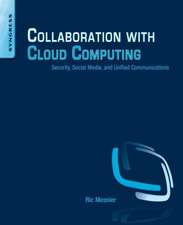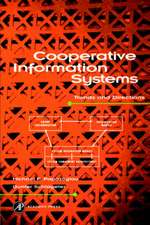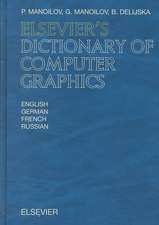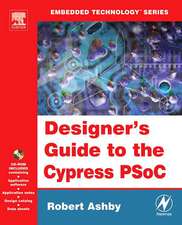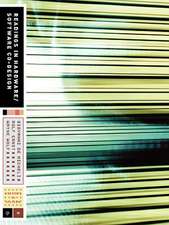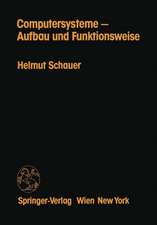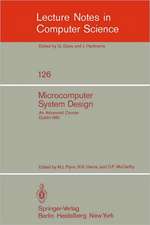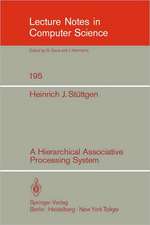The Enterprise Architecture IT Project: The Urbanisation Paradigm
Autor Christophe Longépéen Limba Engleză Hardback – 31 dec 2002
The development of an IT system can be carried out using an urbanisation approach i.e. building an IT system using the metaphor of a city. This concept is based on the fact that in constructing or reorganising information systems, the reconstruction and modernisation involves permanent elements, as are found in a city. Although relatively new, this approach has been successfully employed in a number of projects over the past few years.
The practical approach given in this book allows enterprises or organisations trying to safeguard the efficiency of their IT system, while minimising costs and risk, to implement the theory and put it into practice.
Preț: 429.32 lei
Preț vechi: 536.66 lei
-20% Nou
Puncte Express: 644
Preț estimativ în valută:
82.16€ • 85.46$ • 67.83£
82.16€ • 85.46$ • 67.83£
Carte tipărită la comandă
Preluare comenzi: 021 569.72.76
Specificații
ISBN-13: 9781903996386
ISBN-10: 1903996384
Pagini: 320
Dimensiuni: 156 x 234 x 29 mm
Greutate: 0.6 kg
Editura: ELSEVIER SCIENCE
ISBN-10: 1903996384
Pagini: 320
Dimensiuni: 156 x 234 x 29 mm
Greutate: 0.6 kg
Editura: ELSEVIER SCIENCE
Public țintă
Chief Executive Officers, Chief Information Officers, business department directors, IS department managers, IT systems academics, and business and technical consultantsCuprins
1.Foundations: identifying necessary changes; safeguarding coherence and improving the efficiency of the IT system; improving speed of installation; the metaphor of the city; concepts and rules; urbanism of the city and IT systems; urbanism rules; the infrastructure.
2.Illustration of the approach: i. the tour operator case study. ii. Urbanism and strategy: harnessing and modelling the strategy; objectives model; enterprise diagram; case study. iii. urbanism and business processes: business processes cartography; process modelling; evaluation and improvement of processes; case study. iv. Urbanism and functional architecture: functional and business architecture; the urbanism rules; case study. v. urbanism and software architecture: software and functional architecture; software cartography; transition from target functional architecture to target software architecture; case study.
3.The methodological approach: defining the target and the associated migration plan; construction of the solution; urbanisation process of IT system.
4.The dynamic of the actors: the participants and their roles; skills, techniques and tools; new approach to relationship between project ownership and management; the urbanism focus group.
2.Illustration of the approach: i. the tour operator case study. ii. Urbanism and strategy: harnessing and modelling the strategy; objectives model; enterprise diagram; case study. iii. urbanism and business processes: business processes cartography; process modelling; evaluation and improvement of processes; case study. iv. Urbanism and functional architecture: functional and business architecture; the urbanism rules; case study. v. urbanism and software architecture: software and functional architecture; software cartography; transition from target functional architecture to target software architecture; case study.
3.The methodological approach: defining the target and the associated migration plan; construction of the solution; urbanisation process of IT system.
4.The dynamic of the actors: the participants and their roles; skills, techniques and tools; new approach to relationship between project ownership and management; the urbanism focus group.

